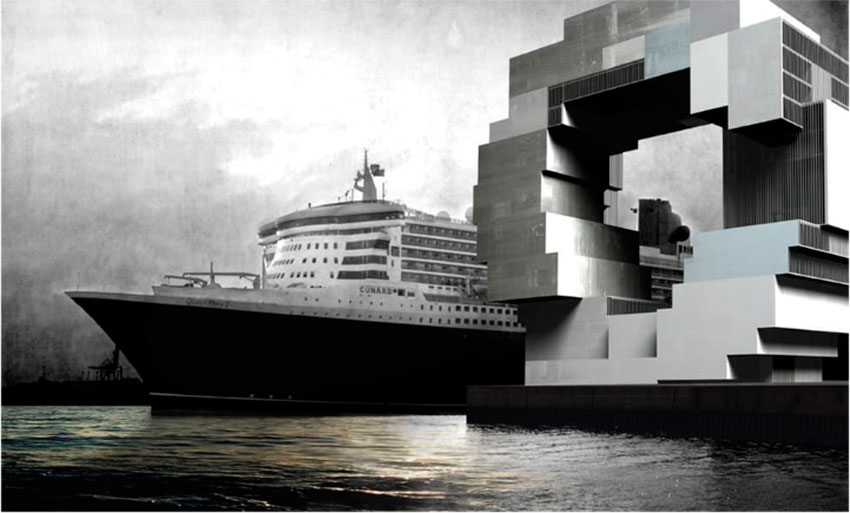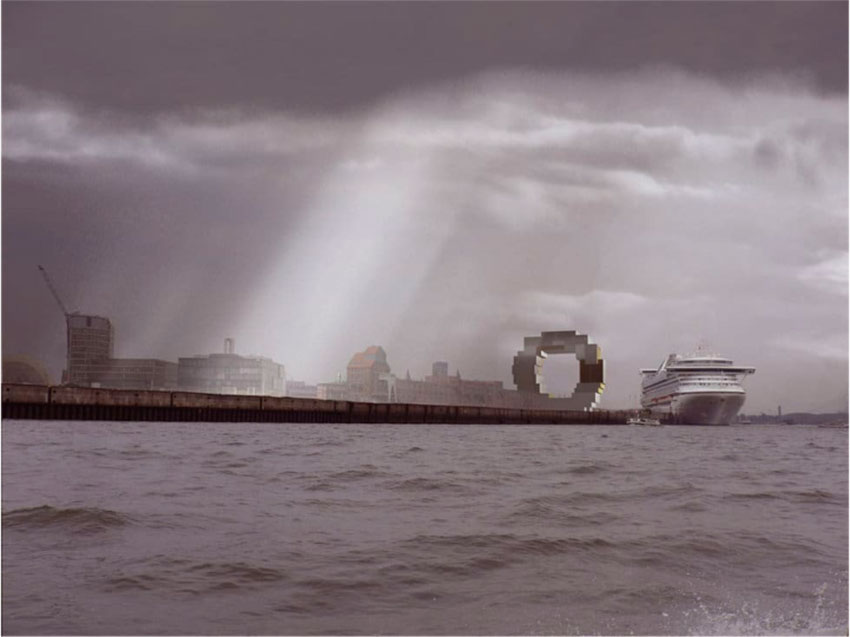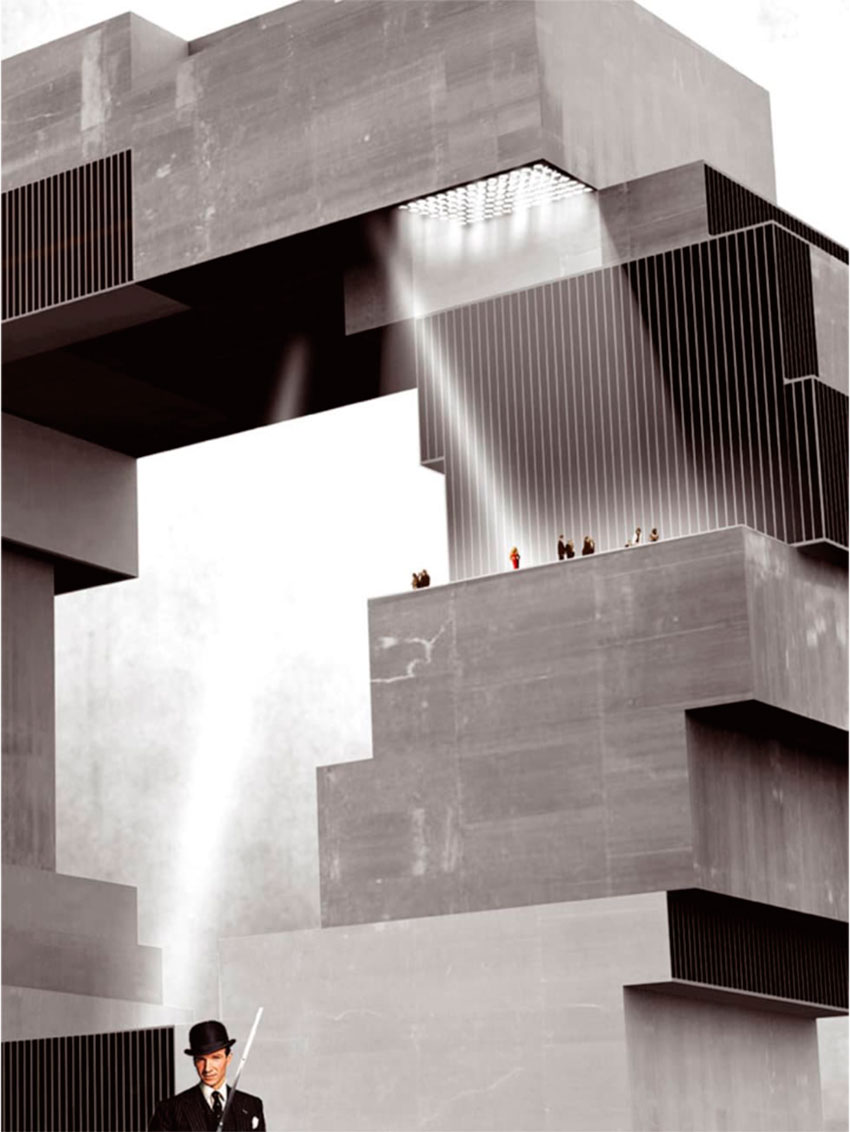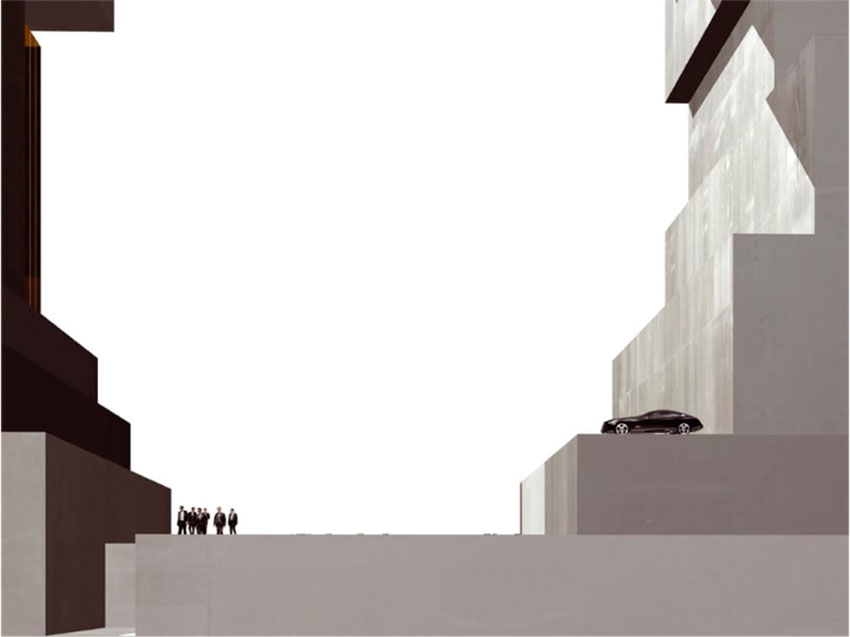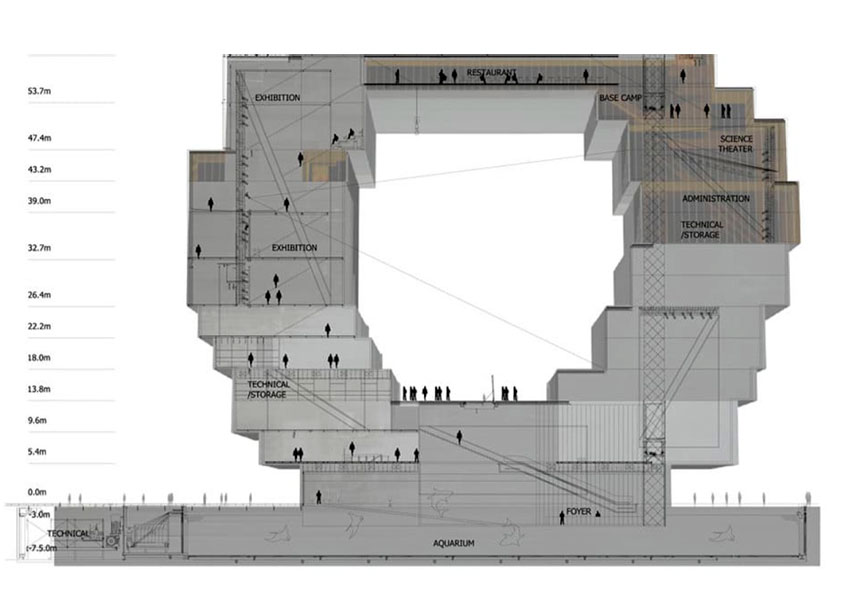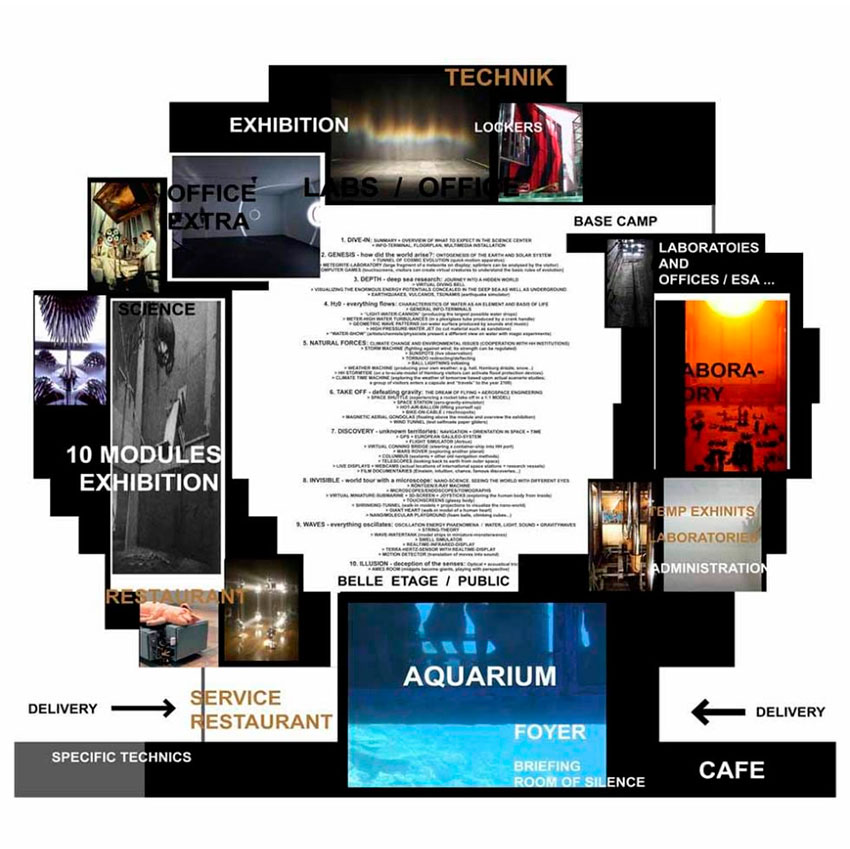Strategically positioned at the gateway to Magdeburger Harbour and serving as the terminus of an urban axis that stretches from the inner Alster to the river Elbe, Hamburg’s upcoming complex is a trifecta of scientific innovation—comprising the Science Center, Aquarium, and Science Theatre.
Hamburg Science Center Technical Information
- Architects: OMA / Rem Koolhaas
- Location: Hamburg, Germany
- Project Year: 2008
- Photographs: © Courtesy of OMA
The Science Centre is constructed of 10 modular blocks that connect to form a ring-shaped building. This shape and the maritime power and mass of the individual blocks resemble the character of the historical, urban waterfront development.
– OMA Architects
Hamburg Science Center Images
Hamburg Science Center
The complex, comprising of the Science Center, Aquarium, and Science Theatre, is located at the entrance to the Magdeburger harbor and sits at the endpoint of an urban axis from the inner Alster to the river Elbe. Situated on the waterfront in close proximity to container and cruise ships, the building marks the connection between the harbor and the city.
The Science Center will become a hub for scientific study in Hamburg and help strengthen the city’s educational profile, creating a place for the next generation of scientists to study and share knowledge. Not only will the Science Centre be linked to many other institutes in Hamburg, but it will also become the generating force for innovative education and be a cultural highlight in itself.
The Science Centre is constructed of 10 modular blocks that connect to form a ring-shaped building. This shape and the maritime power and mass of the individual blocks resemble the character of the historical, urban waterfront development. Therefore, the building is a symbol of Hamburg’s economic strength and a representation of the city’s interest in technology and science.
The exhibition space also works on a modular principle similar to the building. This gives the curators of the space a great deal of freedom and flexibility. A variety of subjects will be able to go on display, making the exhibition center a stage for not only scientific research but also for all aspects of our modern life.
The Science Center addresses not only environmental issues but also programmatic sustainability.
The function of the ten blocks that make up the building allows for large-scale programmatic changes on a daily basis. The central structure accommodates the vertical circulation, whereas the blocks on the west and east side are used as exhibition spaces. The curator is able to generate shortcuts changes, or create connections by means of moveable partitions.
With three terraces surrounding the building, the Science Centre allows access to the Hamburg city center as well as to the West and East sides of the Magdeburg harbor. This three-way axis will link the various parts of the city and bring new life into the Hafencity. It enables direct interaction between visitors and passers-by, functioning as an urban stage. Various events taking place on top of the individual plateaus of the building, as well as the restaurants on the terrace of the Belle Etage, will stimulate activity in the Hafencity.
NOTES
- Team: Marc Paulin, Mark Balzar, David Brown, Alexander Giarlis, Sangwook Park, Joao Ruivo, Richard Sharam, Anatoly Travin
- Engineers: Binnewies GmbH, Hamburg
- Fire services: HHP, Berlin
- Scenography: Ducks Scéno, France
- Lighting: LKL

